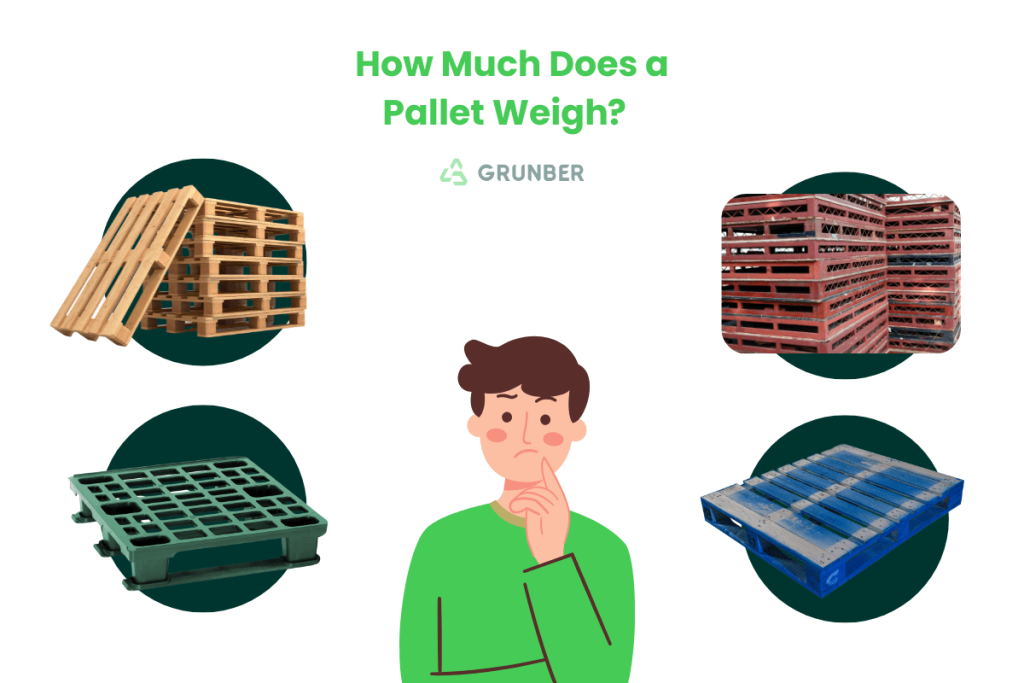When managing shipments, warehouse storage, or simple DIY projects, pallets often play an unsung yet crucial role. They’re the backbone of logistics—quite literally—holding everything from water bottles to bricks. But how much does a pallet weight? It’s a common question that touches on safety, cost-efficiency, and even regulatory concerns.
In this article, we’ll break down the different types of pallets, average pallet weight, and how factors like material and design can affect both the mass of the pallet itself and how much weight it can support. Whether you’re curious about wooden pallet weight, CHEP pallet weight, or how much a pallet of water or brick pallet can weigh, we’ve got you covered.
Quick Reference Table
| Pallet Type | Typical Weight | Load Capacity |
| Standard Wooden (48×40) | 40–50 lbs | ~2,000–2,800 lbs |
| Plastic Pallet | 15–40 lbs | Varies widely (1,500–3,000+ lbs) |
| Metal Pallet | 50–70+ lbs | 3,000+ lbs |
| CHEP Pallet | 45–50 lbs | 2,800+ lbs |
Why Pallet Weight Matters
- Safety: Overloading a pallet can lead to breakage, accidents, or damage to your goods. Knowing how much weight can a pallet hold helps you stay within safe limits.
- Cost Calculations: Carriers often charge based on the total weight of your shipment. Factoring in the weight of the pallets themselves ensures accurate freight quotes.
- Equipment Compatibility: Understanding pallet jack weight limit and other equipment constraints is crucial for smooth operations in warehouses or retail backrooms.
Common Pallet Materials and Their Weights
When we talk about standard pallet weight, we’re usually referring to a 48″ x 40″ wooden pallet—the most commonly used size in North America. But even within this category, weights can vary based on the type of wood, construction style, and moisture content.
Wooden Pallets
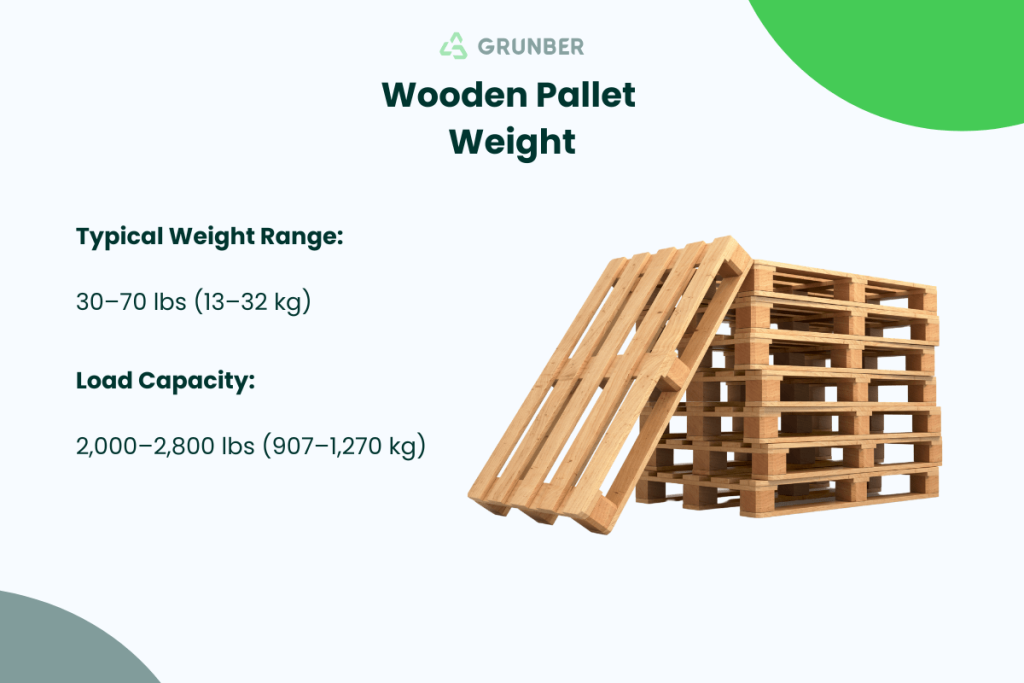
- Typical Weight Range: 30–70 lbs (13–32 kg)
- Why the Variation?: Softwood pallets (like pine) tend to be lighter, whereas hardwood pallets (oak, maple) weigh more. Moisture in the wood can also alter weight.
- Load Capacity: A well-constructed wooden pallet can hold between 2,000–2,800 lbs (907–1,270 kg), making it suitable for most general-purpose shipping needs.
Standard Wooden Pallet Weight
For a classic 48″ x 40″ pallet made from pine or a similar softwood, the average pallet weight hovers around 40–50 lbs. This is commonly accepted as the “standard,” although real-world conditions can shift that figure slightly.
Plastic Pallets
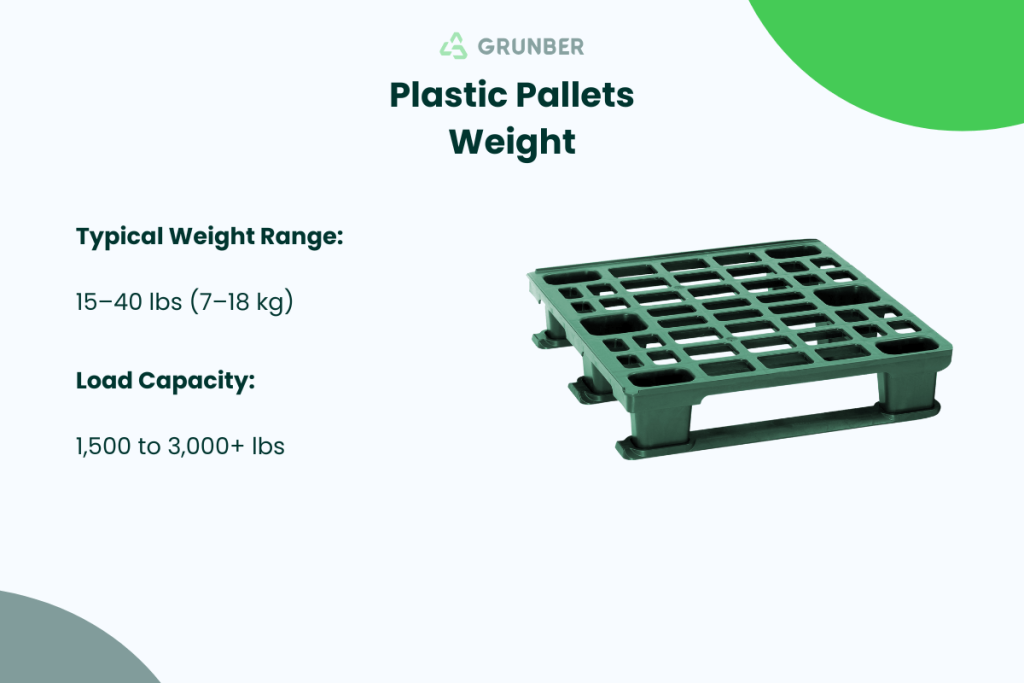
- Typical Weight Range: 15–40 lbs (7–18 kg)
- Load Capacity: Plastic Pallets typically have a load capacity ranging from 1,500 to 3,000+ lbs, depending on their design and the material used (e.g., HDPE vs. PP).
- Pros: Lightweight, resistant to moisture and pests, often nestable (saving space).
- Cons: Can be more expensive upfront, may have lower load capacity depending on design.
Metal Pallets
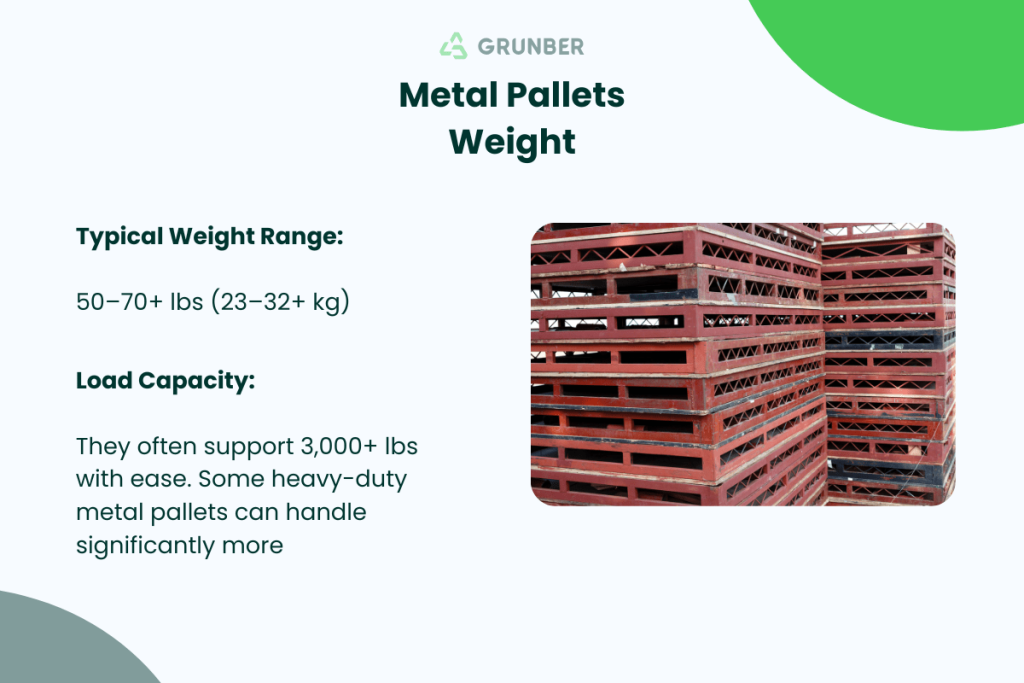
- Typical Weight Range: 50–70+ lbs (23–32+ kg)
- Load Capacity: Metal Pallets are known for their robustness. They often support 3,000+ lbs with ease. Some heavy-duty metal pallets can handle significantly more, making them ideal for industrial applications involving very dense or heavy items.
- Pros: Extremely durable, can handle heavy loads, resistant to chemical spills.
- Cons: Heavier (which adds to shipping costs) and pricier than wood or plastic.
CHEP Pallets
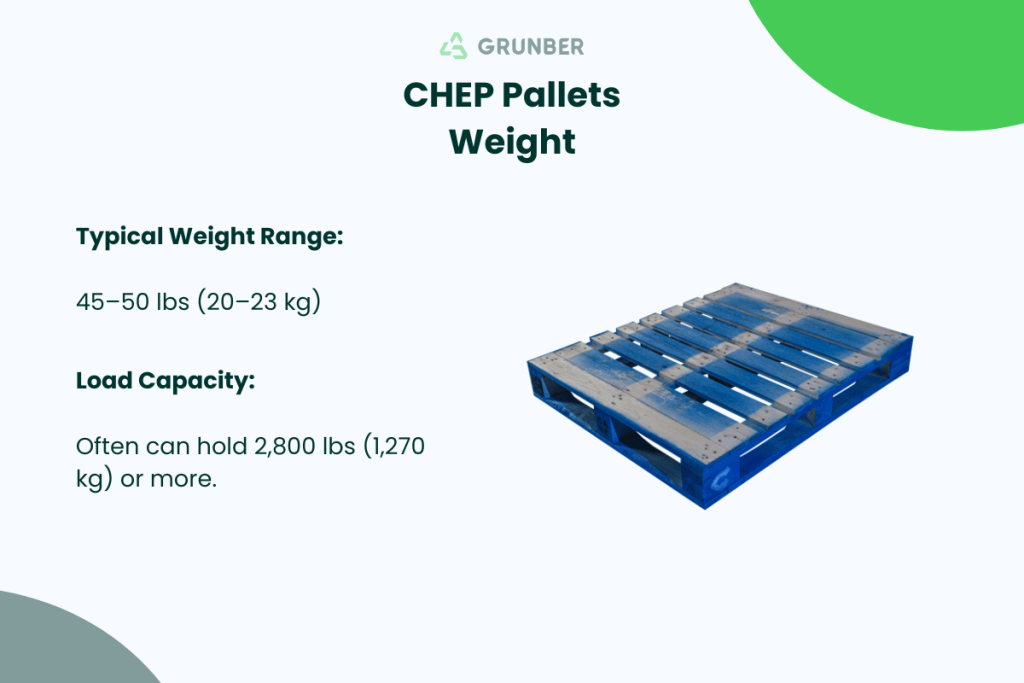
CHEP pallets are a type of pooled or rented pallets known for their uniformity and robust construction. They are typically made of high-quality hardwood or a wood-composite blend.
- CHEP Pallet Weight: Ranges from about 45–50 lbs (20–23 kg), making them comparable to standard hardwood pallets.
- Load Capacity: Often can hold 2,800 lbs (1,270 kg) or more.
- Benefits: Consistent quality, well-maintained, and easily replaceable through CHEP’s rental system.
How Much Weight Can a Pallet Hold?
As we’ve seen, different pallets have different load capacities. But how do you figure out the specifics?
- Manufacturer Specifications: Most pallet suppliers or rental services (like CHEP) provide detailed load capacity information.
- Pallet Condition: Even the best pallets degrade over time. Inspect for cracks, loose boards, or excessive wear that might reduce the maximum load.
- Load Distribution: Properly distributing weight across the surface can prevent sagging or tipping.
Keep heavier items toward the center of the pallet and stack evenly to avoid creating pressure points.
Specialty Pallet Loads
Pallet of Water Weight
Wondering about a pallet of water weight? Water is dense, and a single gallon weighs about 8.34 lbs (3.78 kg). Bottled water typically comes in 16.9 oz or 1-gallon jugs. Let’s do a rough calculation for a single pallet:
- Example: If you have 72 cases of 24 × 16.9 oz bottles on one pallet:
- Each bottle = ~1.05 lbs (including the bottle weight)
- Each case (24 bottles) = ~25.2 lbs
- 72 cases = 72 × 25.2 = 1,814.4 lbs
- Plus Pallet Weight: Add ~40 lbs for the pallet itself, totaling around 1,854 lbs.
Brick Pallet Weight
Brick pallet weight can vary significantly based on the type of brick and how many are stacked on one pallet.
- Standard Clay Brick: Around 4–5 lbs per brick
- Concrete Brick: Can be 5–8 lbs each, depending on density
- Example Calculation: If you have 500 clay bricks (5 lbs each), that’s 2,500 lbs plus the pallet weight. You’re looking at roughly 2,540 lbs total.
Pallet Jack Weight Limit
The pallet jack weight limit typically falls between 4,500 and 5,500 lbs, depending on the model. Hand pallet jacks are often on the lower end, whereas electric pallet jacks can accommodate higher weights.
- Check Manufacturer Guidelines: Overloading a pallet jack can lead to equipment failure and safety hazards.
- Consider Pallet Jack Weight: The pallet jack itself adds extra weight, which might matter if you’re shipping the jack along with your freight.
Factors Affecting Pallet Weight
- Moisture Content: Wood pallets absorb and release moisture, changing their weight (and sometimes their structural integrity).
- Repairs and Reinforcements: Additional boards or metal brackets can add extra pounds.
- Design: Two-way vs. four-way entry, block vs. stringer design—all can affect both the pallet’s weight and load capacity.
Pallet Disposal & Removal: Grunber’s Got You Covered
Inevitably, you’ll need to dispose of old, broken, or surplus pallets—especially if they’re crowding your storage areas. If you’re tired of juggling pallet weight calculations and want a cleaner workspace, consider Grunber’s Pallet Removal services. Our team takes away unwanted pallets quickly and efficiently, freeing you up to focus on what matters: running your business.
You may also be interested in:


